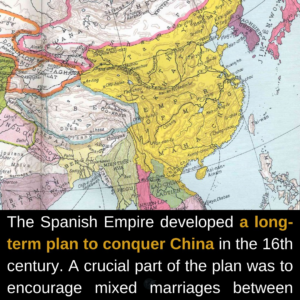In the late 16th century, plans were floated throughout the increasingly powerful Spanish Empire for a possible conquest of China.
Many of those in the recently acquired Spanish territory of Manila, including governor Francisco de Sande, were in favour of using the Philippines to stage such an attack.

Were it not for the reluctance on the part of Philip II, who was occupied with threats in Europe, perhaps an invasion would have been launched. But could it have been successful? Or would it have resulted in disaster?
Why did the Spanish Empire contemplate invading China?
At the very beginning of the 16th century, the Spanish were competing with the Portuguese and wanted to seize a port similar to Macau.
Spain’s initial interest in China arose from early contacts between the Portuguese and Chinese.
These began around 1511 in Malacca, in modern-day Malaysia, a city oflittle was known about China in the West, in contrast to the Americas, until the second half of the 16th century, although there are some Portuguese manuscript sources from as early as 1524.
The notion of armed incursion, the seizure of a port or of the whole province of Canton, was mooted in these accounts.
They also described an “effeminate” Chinese population exploited and tyrannised by mandarins, with a defective military.
The Portuguese attempted to establish themselves from the 1520s in Macau, but suffered a series of naval defeats, with the Chinese reverse-engineering and then mass-producing the canon and firearms they had captured, neutralising any military advantage Europeans may have possessed.
Eventually they signed a treaty and leased Macau to the Portuguese in 1557 in exchange for silver, an arrangement that lasted until 1999.
